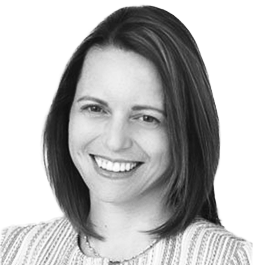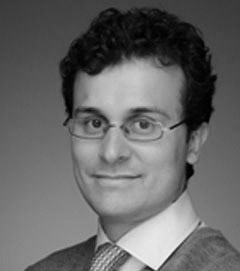At the Desautels Faculty of Management’s recent McGill International Portfolio Challenge 2021 Integrated Management Symposium, pension plan experts Barbara Zvan and Eduard van Gelderen shared their insights on the future of retirement systems with moderator and Desautels Professor Sebastien Betermier.
Delve’s video and accompanying article are excerpted from the symposium Designing Sustainable Retirement Systems in the Current Environment of Ultra-Low Yields, held on November 3, 2021, co-presented by Delve and powered by the Global Risk Institute.
Retirement systems around the world, from public pension plans to private funds, are weathering a storm of ultra-low bond yields that threaten not only adequate returns for pensioners but the sustainability of the systems themselves. Designing retirement systems that are resilient to low yields requires balancing risk with resilience and innovative approaches.
As Betermier points out, the complexity of this issue stems both from low bond yields and an increase in life expectancy at retirement age: bond yields went down from 15% per year in 1982 to 2% per year today in Canada, while life expectancy at retirement has gone up by four years for Canadians since 1982, leaving pension plans with more years to cover. Meanwhile, the World Economic Forum predicted a retirement savings shortfall of $400 trillion by 2050. With those changes in mind, a looming question for pension experts is whether retirement systems are at the bottom of an extended economic cycle or in a new normal with low yields expected for a long time.
Zvan argues that as more pressures keep rates down rather than keep them up, there won’t be much change in the near term. van Gelderen says that though it won’t happen overnight, yields will recover to be a better reflection of what is happening in the real economy, where interest rates should typically follow the trend of economic growth: “I certainly believe that we will come to a normalization, where yields will be around 4% to 5%.”
Can the Canadian model point the way forward?
One of several exceptions to the global trend is the Canadian pension fund model, outperforming peers in terms of returns while also hedging risks, Betermier states. He adds that this is due to 80% of fund management being in-house, allowing for broader expertise within the funds and a reduction in cost that is redeployed “across every single asset class to grow the internal capabilities of the funds.” That includes investments in bonds as well as in alternative assets, such as real estate and infrastructure that diversify the portfolio and generate additional returns.
“Yes, we do replace some of our bond positions with infrastructure, especially infrastructure that is linked to inflation,” says van Gelderen. “But we have to keep in mind that we do add actually additional risk factors to the portfolio. That’s fine as long as it stays within your overall risk budget.”
Zvan agrees that alternative assets need to be thought about it from a portfolio perspective, citing e-commerce and the move away from brick-and-mortar shopping: “If you think about the pandemic and what it’s done to those portfolios, it’s something that people didn’t think about. That is exposed to risk far more than bonds.”
Zvan says that part of what has been critical to the success of the Canadian funds model is an innovative spirit that grew out of problem solving for risk management and value creation over the long term: “You start really small, prove that you can do it, and then you’re allowed to grow it over time…proving that you can do it within the risk framework, get the talent, get responsibilities to good management. That all starts to work together.”
Communicating the benefits of risk sharing
The nature of pension funds requires long–term value creation and taking on its associated risk, even if that risk is controlled. van Gelderen argues that communicating that risk to plan members is essential. “I firmly believe that solidarity is important for everyone to have a proper pension,” he says. “That should be at the high end of the discussion.”
Zvan adds that communicating the overall complexity around saving for retirement still remains a challenge when many people, including retirees, have the impression that defined benefits are an absolute guarantee. “That’s not the model that you can do, since guarantees are expensive,” she explains. “That’s why having a group and sharing the risk is really important. It’s intuitive. For a lot of the pension plans in Canada, that’s done by the representatives, so the employer and the employee groups together so they share the risks and they share the governance. How you communicate is already part of the thought process.”
The next 10 years of pension fund innovation
The future of both public and private pension funds is tied to broader economic, social, and environmental change—any innovations need to acknowledge current realities and their most predictable impacts.
Figuring out how to adjust to climate change and its wide-ranging effects is a vital innovation over the next 10 years, says Zvan: “The investment that we all collectively have to do for that is huge. So how do you fit it within the model? How do you set targets? How do you operate the plan with a return objective?”
In terms of such larger shifts, van Gelderen adds that there is still work to do on the risk side of pension plans, especially on identifying clear risk tolerance statements and sticking with them even in times of change, as hard as that often is. Changing the risk-tolerance statement “doesn’t help in terms of creating stability over time,” he says. “Related to that, the true risk sharing that we put in place is going to be crucial for pension plans going forward.”

Barbara Zvan
University Pension Plan Ontario

Eduard van Gelderen
PSP Investments

Sebastien Betermier
Desautels Faculty of Management
Article written by: Robyn Fadden
This Delve video is excerpted from the McGill Desautels Faculty of Management’s McGill International Portfolio Challenge 2021 symposium event, part of the Integrated Management Symposium Series. For more, watch the full video of the symposium: Designing Sustainable Retirement Systems in the Current Environment of Ultra-Low Yields.
Delve video editing by: Sofia Chaudruc, from original video by McGill Office of the Vice-Principal













